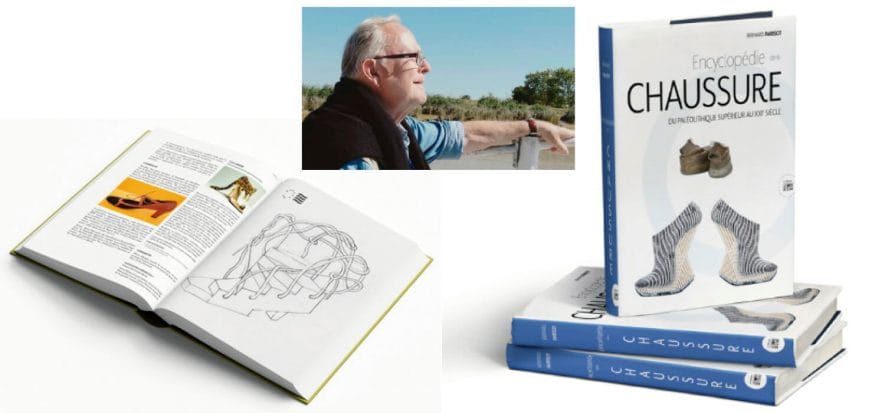It took 20 years of research. But it was worth it. Because the publication of the first Shoe’s Encyclopaedia has arrived (Encyclopèdie de la Chaussure, Le Bord De l’Eau, 520 pp., 49 euros). The volume, which also collects 700 photos and illustrations, contains the history of footwear “from the Upper Palaeolithic to the 21st century”. That is, for a period of about 10,000 years. Brands, designers, inventors, artists, celebrities and footwear representations by contemporary artists. A monumental work, which soon became a reference for the sector, bearing the signature of Bernard Parisot. Economist, engineer and former consultant of the André Group, Parisot is advisor for the development of the Fédération Française de la Chaussure. He is recognised as a historian within the Conseil National du Cuir. Its president, Frank Boehly, edited the preface of the volume.
The Shoe’s Encyclopaedia
Mr. Bernard, who is this book for?
To the general public, to enthusiasts, to footwear and fashion professionals.
But look,…did the leather or the shoe come first?
In light of current research, the oldest leather shoes are those found in Armenia (carbatins of 5,500 years BP) and those of the Ötzi mummy (4,546 BP). But excavations in Oregon have found older shoes made from plant fibres. Made by populations who, moreover, already knew leather. Finally, evidence is provided of the existence of shoes 35,000 years ago. It is quite possible that they were made of leather, but there is no proof.
Talking about Italy, what is the thing that struck you the most in your research?
The admiration I have for Italian shoes, obviously passes through their creators. The greatest for me remains Ferragamo, not counting the Italians who have made a career in France. But what I admire the most, is the ability of professionals to come together on a regional level to create truly competitive districts. It is a secret of success that the French have never been able to discover, and which explains the subsequent collapse of shoe cities of the past. Last but not least, I have a particular attraction for the Vigevano museum, its exhibitions and works.
You have documented the history of footwear but…what is your future?
The progressive evolution towards a customisation of aspects, materials and functions, whether recreational, technical or medical, with the implementation of 3D processes, which will create new opportunities for high-end craftsmanship.
Compared to the past, many more materials are used as an alternative to leather. How will this trend evolve?
Leather will remain, for its symbolic image and thanks to the enrichment of its aspects.
There is a huge overproduction of shoes. Given the growing sensitivity to sustainability, is this an issue that needs to be addressed and rethought in your opinion?
Yes, of course, and above all, in terms of relocation.











